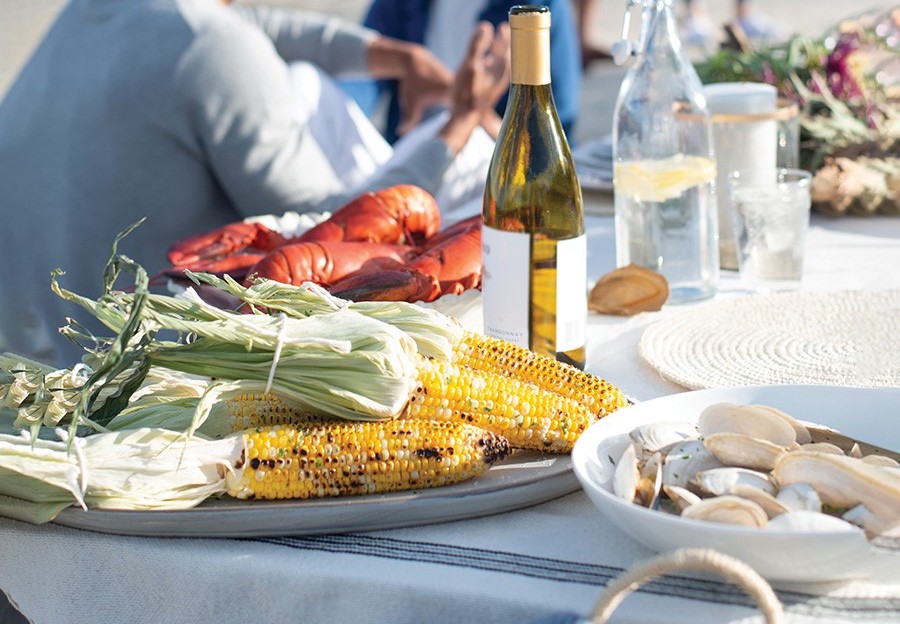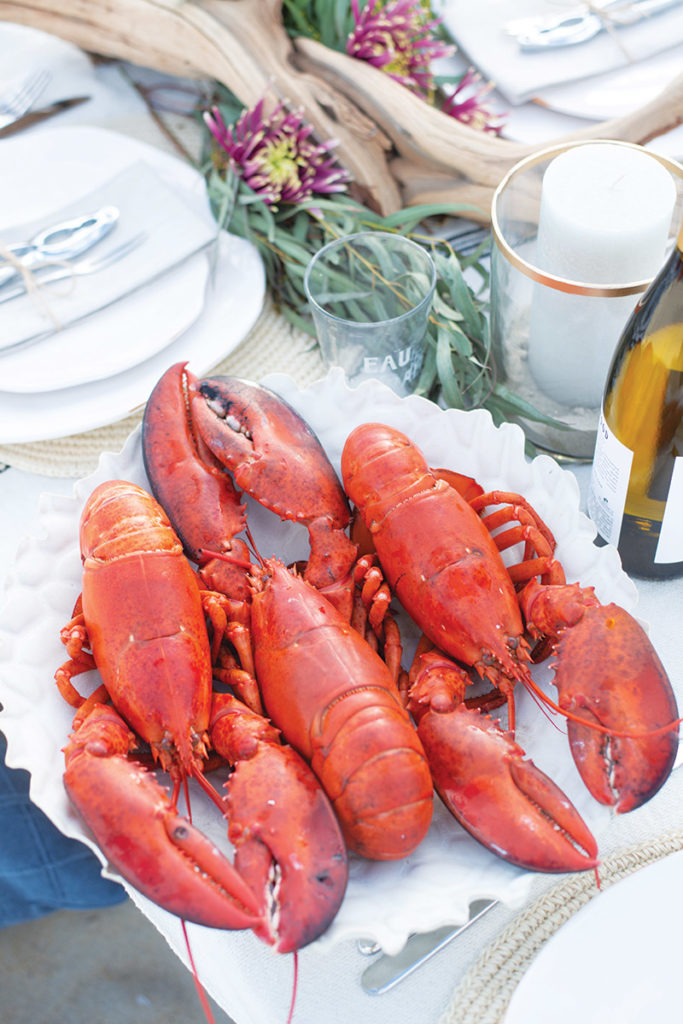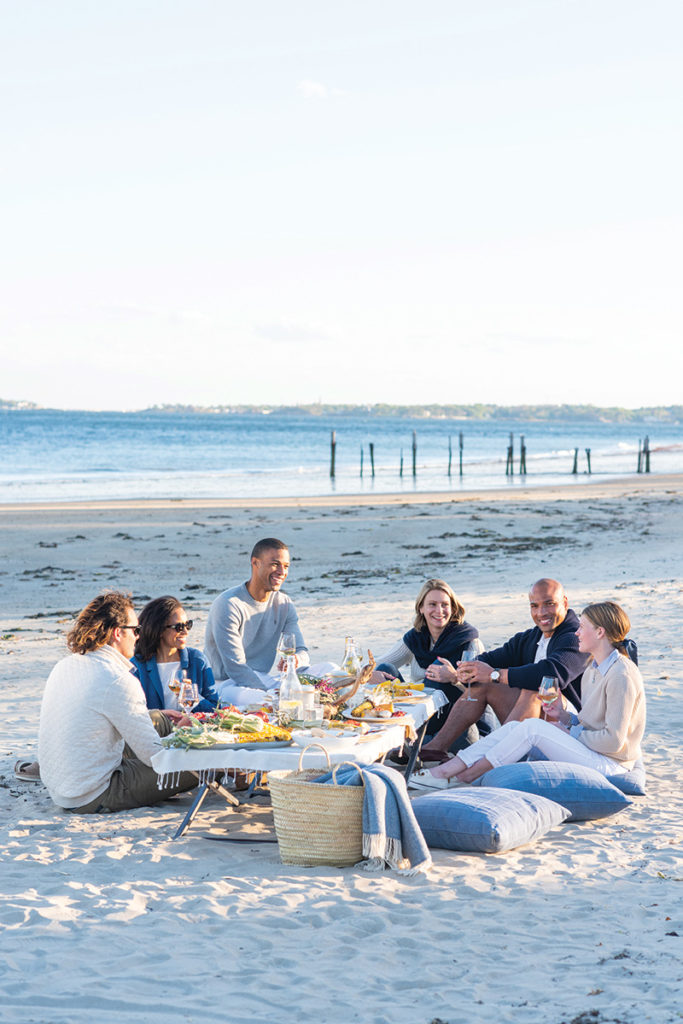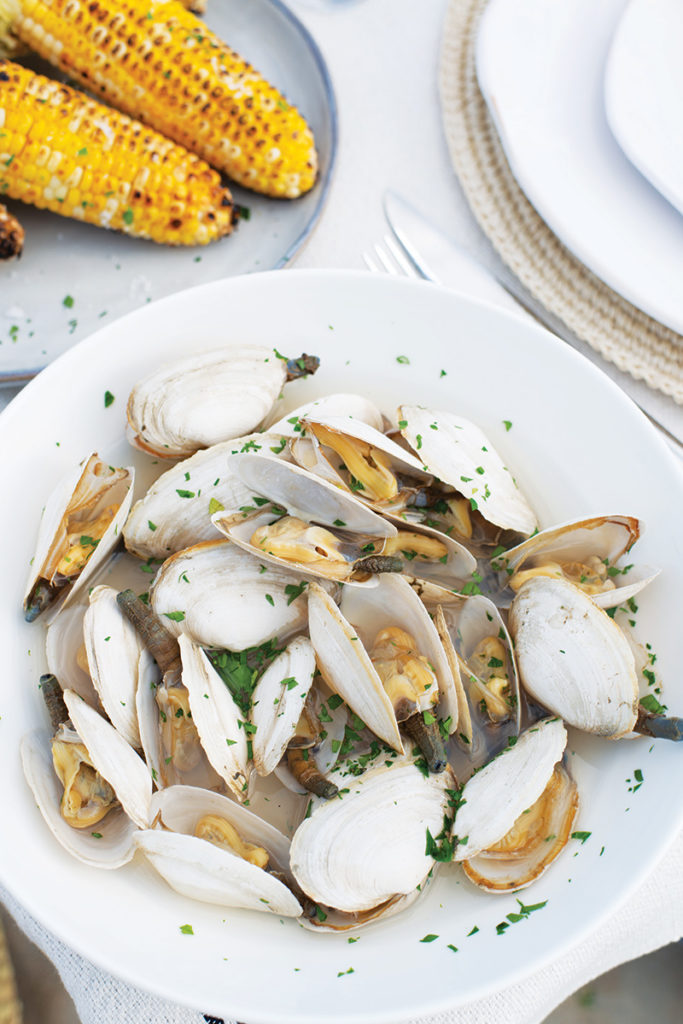Succulent lobster, sweet corn, and local clams—these are the essential ingredients for a clambake, one of New England’s most cherished summer feasts. According to Kathy Neustadt, author of Clambake: A History & Celebration of an American Tradition (University of Massachusetts Press), the early settlers learned to roast clams from the Native Americans and over time turned the clambake into their own unique event.
Clambakes traditionally took place on the shore, and foraging for clams was often part of the fun. The bivalves, along with other ingredients: cooked between layers of seaweed in a sandpit lined with smooth stones that became white-hot after a fire had burned down to embers. The seaweed lent moisture and effectively steamed the food until tender. Some clambakes were small family affairs serving just chowder, clams, corn and watermelon, while others were community-wide extravaganzas replete with clams, fish, lobster, sausages, potatoes, corn, salads, sandwiches, pies, and cakes.
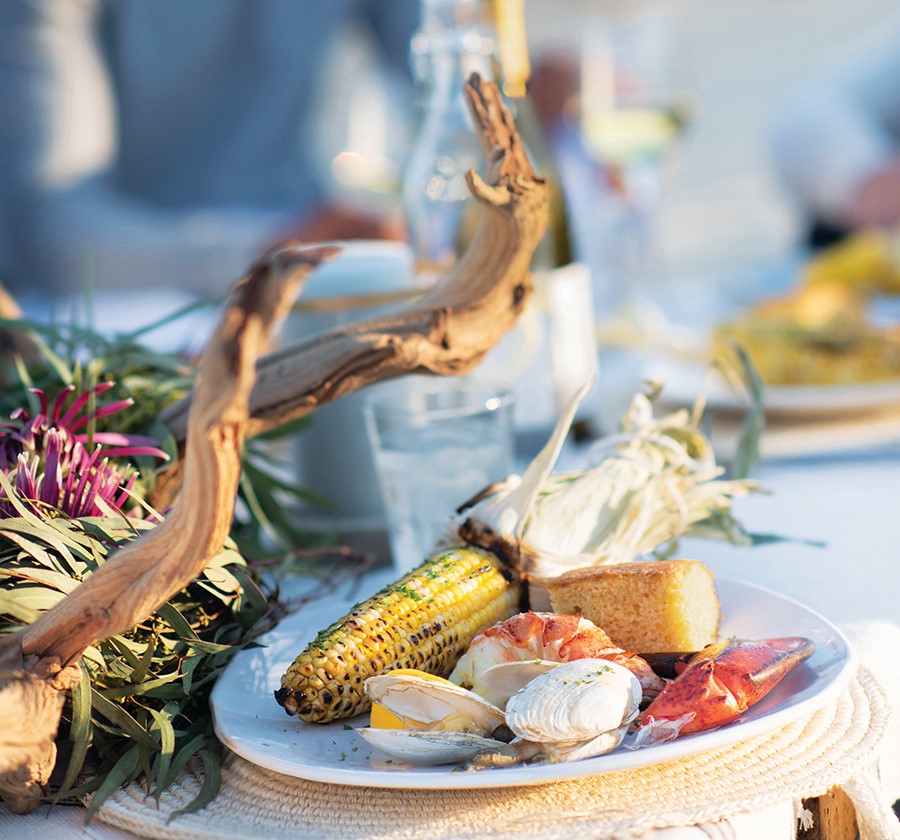
While today’s clambakes tend to be cooked away from the beach in pots over propane, the traditional menu components have endured. “Our standard clambake is lobster, steamers, corn on the cob, a garden salad, and strawberry shortcake for dessert,” says Rick Delisle, co-owner of Vinwood Caterers in Ipswich. “We can do a clambake anywhere—on an island or beach—but the most common setup is at someone’s home. Everything is cooked on-site out in the open so people can see the steamers cooking and watch us put the lobsters in pots.” Delisle sources his lobsters from Captain Joe & Sons, Inc. in Gloucester, his steamers from Ipswich or Essex, and his corn from Marini Farm in Ipswich.
“The presentation [of this spread] is what separates us from others,” says Delisle. “Ours look very ‘clambakey.’ We crack the lobsters and serve them on plates with steamers from a six-foot dory on the buffet,” further decorated with fishing nets, lobster traps and rope. “We also have plenty of wet naps for people because lobsters are messy and with all that butter, you need them!”
One of the North Shore’s most beloved clambake purveyors is Woodman’s of Essex, founded in 1914. “We used to do all our clambakes at Singing Beach [in Manchester-by-the-Sea] in the 1920s for hundreds of people,” says Maureen Woodman, director of catering sales. “We’d first lay down the potatoes, then mussels or steamers, lobsters and corn [between seaweed in a stone-lined sandpit] and cook everything until the lobsters were red and the corn husks blackish brown. Nowadays, we do a modern clambake and cook everything in boiler pots over propane, which gives the food a cleaner taste, compared to the woodfire, which makes everything taste smoky.”
The restaurant caters approximately 300 clambakes annually and offers four different kinds. Most popular is the All-American menu of clam chowder, steamers, mussels, lobster, BBQ ribs, corn on the cob, coleslaw, cornbread, and a seasonal dessert, which ranges from warm-weather strawberry shortcake to autumnal Apple Pie Bars with salted caramel. Woodman’s of Essex has its own clam diggers and lobstermen and buys their corn from Marini Farms. “We even have clambakes to go,” says Woodman. “They’re Covid-friendly because the lobster and steamers come in their own self-contained packages—shells.”
Another prized clambake caterer is Ipswich Clambake. “We do plus or minus 300 clambakes a year,” says owner Ken Siegel, who opened the business in 1976. “We do them at catering venues, as well as people’s homes, cooking everything separately in large pots over propane.” While Ipswich Clambake offers multiple clambake menus, most people order its New England one, which features clam chowder, steamed clams, cranberry-apple feta salad, lobster, hamburgers, and hotdogs, corn on the cob, coleslaw or potato salad, watermelon slices, and brownies. Siegel sources his clams from Ipswich, his lobsters from Gloucester, and corn from Marini Farms. Ipswich Clambake also sells individual clambakes to go.
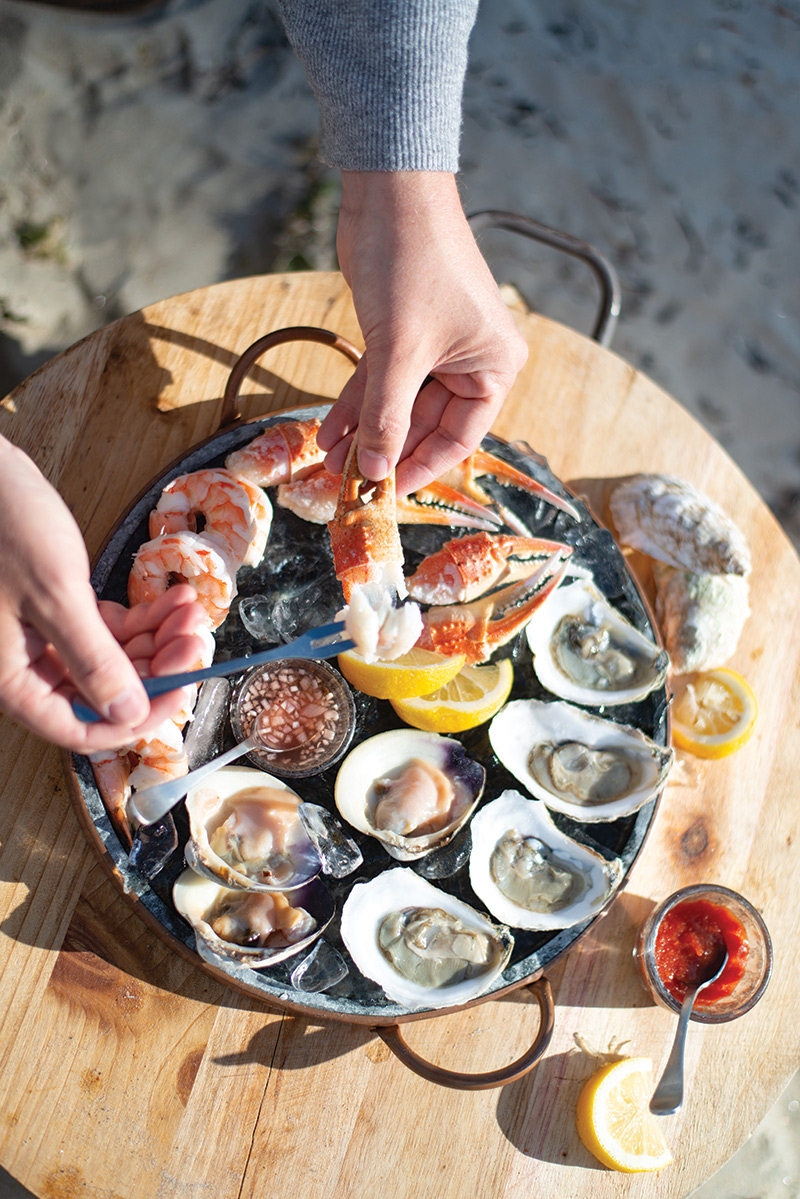
“Clambakes are a tremendous amount of fun,” says Siegel. “They’re unique to New England, you’re bonding with other people, and you just can’t duplicate the freshness of the seafood we have here.”
MODELS: Enku Gubaie/Maggie, Inc.; Annie Olmstead/Maggie, Inc.; Clinton Graham/Maggie, Inc.; Lee Washington/Maggie, Inc.; Lauren Pippens; Jeff Evans
ipswichclambake.com, vinwood.com, woodmans.com, makandcoandover.com
Tips for Creating an At-Home Mini Clambake
Buy Ingredients Locally
Locally source your lobsters, clams, and corn to insure the freshest products and support North Shore purveyors. Delisle, Siegel, and Woodman feel Ipswich and Essex clams are sweeter and less chewy than clams from elsewhere.
Steam Your Food
Mimic the sandpit cooking method by steaming clams in a lidded pot with
no liquid. The mollusks will become plump and yield a savory dipping broth (strain through cheesecloth to remove any grit). Separately steam lobsters and corn in a stockpot filled with a few inches of water for lobster meat and corn that is more tender than if you’d boiled it.
Get the Right Tools
Equip yourself with lobster crackers to break open lobster shells and lobster picks to remove meat from tricky areas like knuckles and legs. Bibs will deflect spatters, and napkins or moist towelettes can refresh buttery fingers.
Eat Outside
Plan your clambake for a nice day so that you can enjoy your meal outdoors, just like the first settlers.

